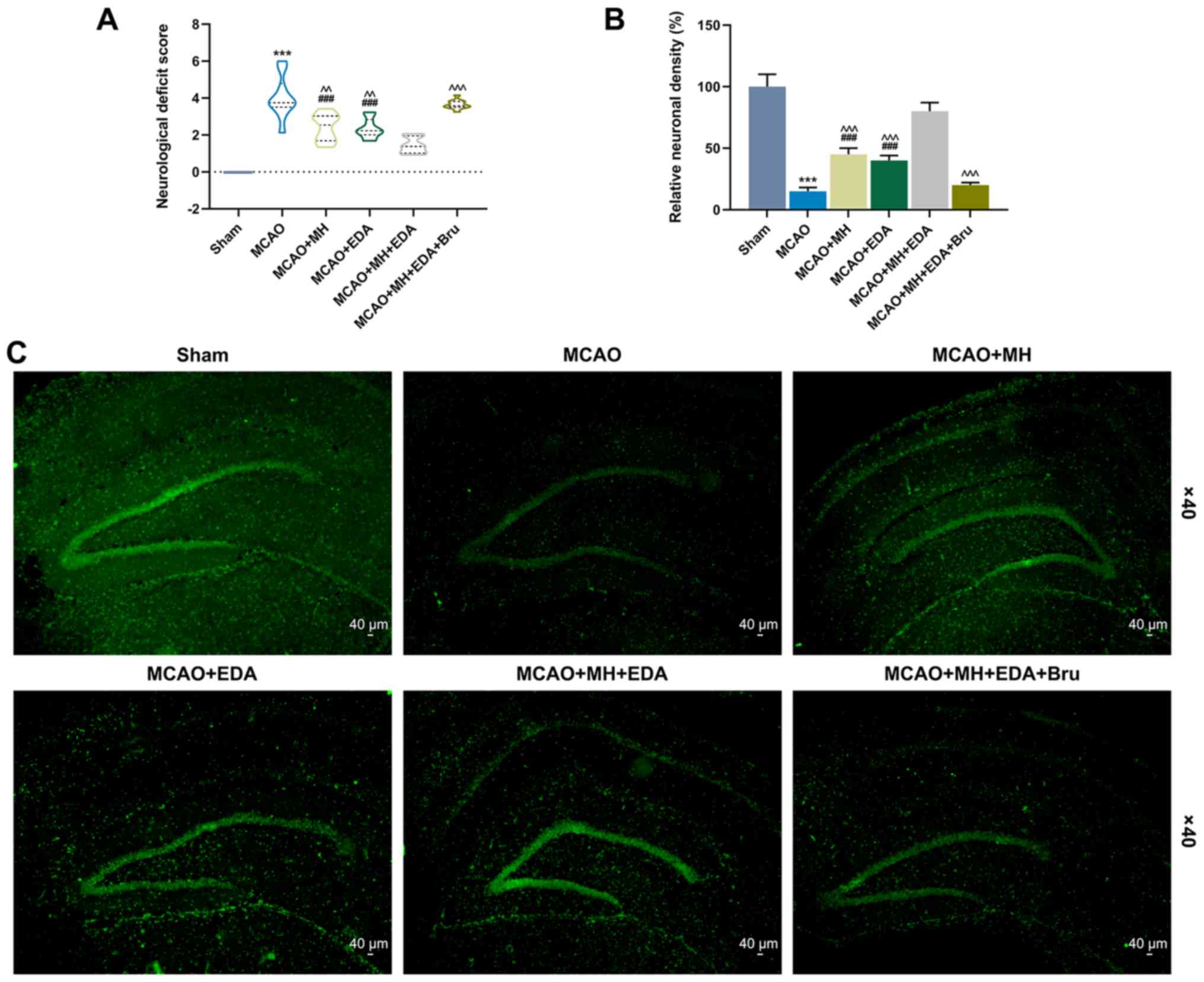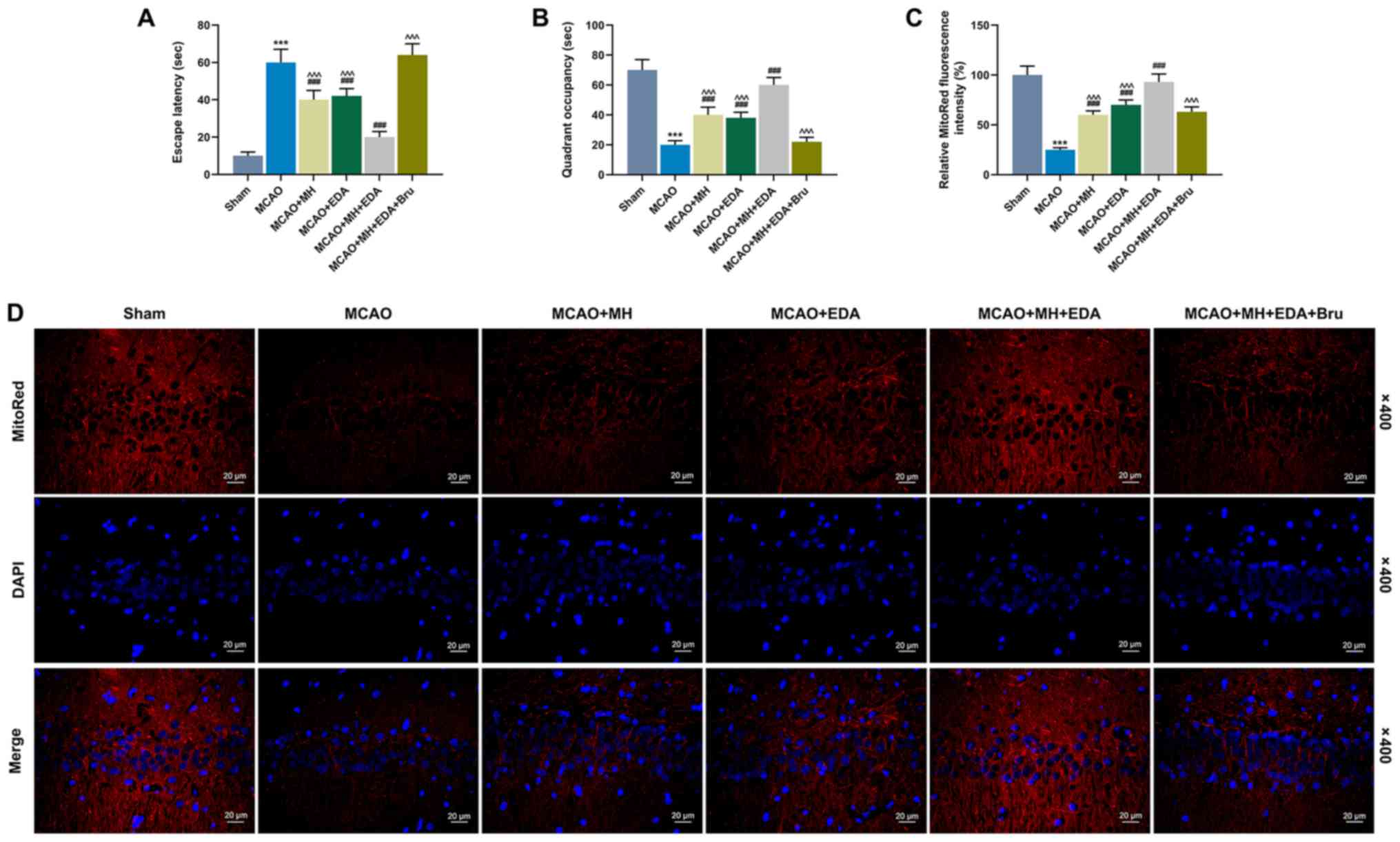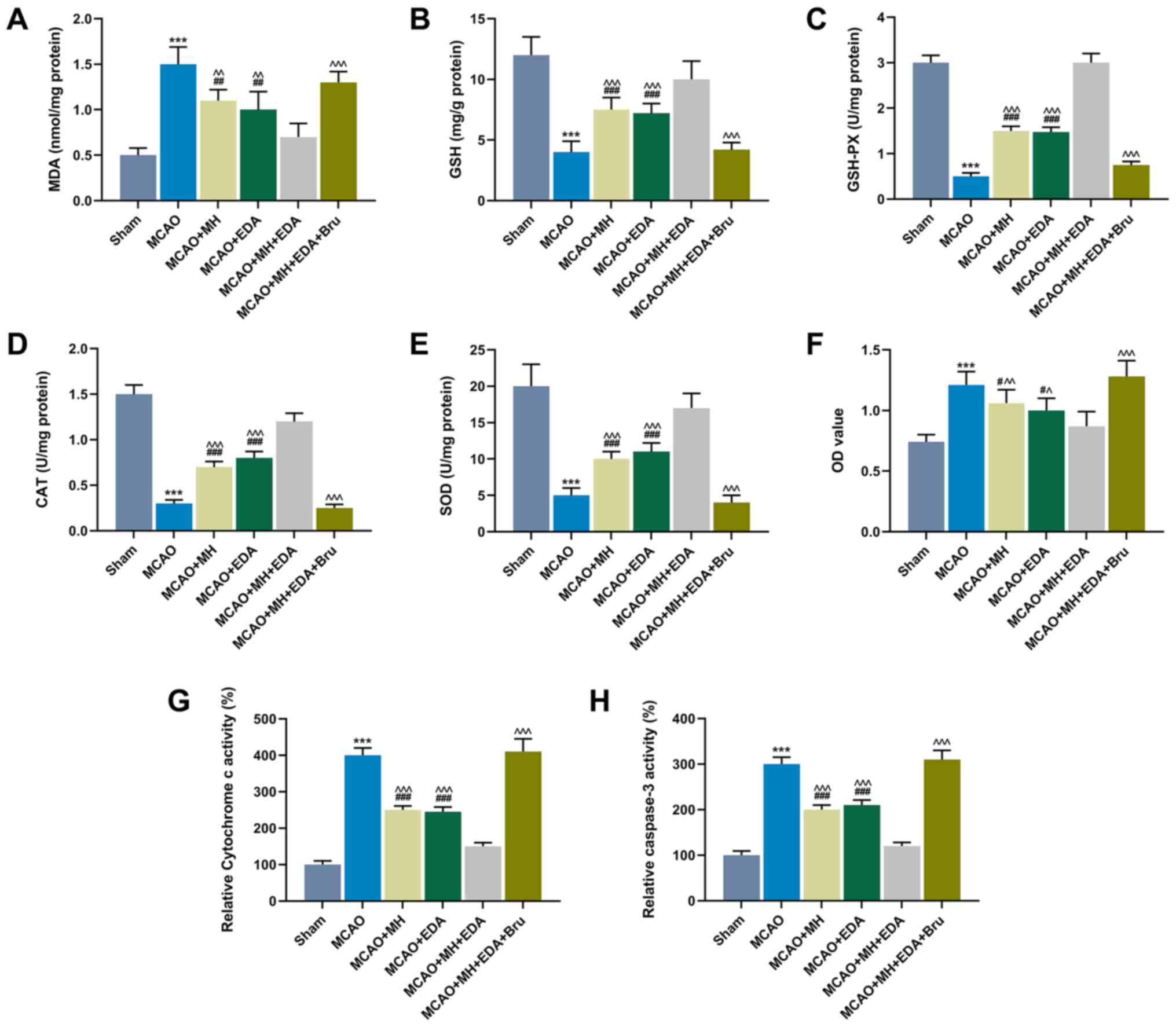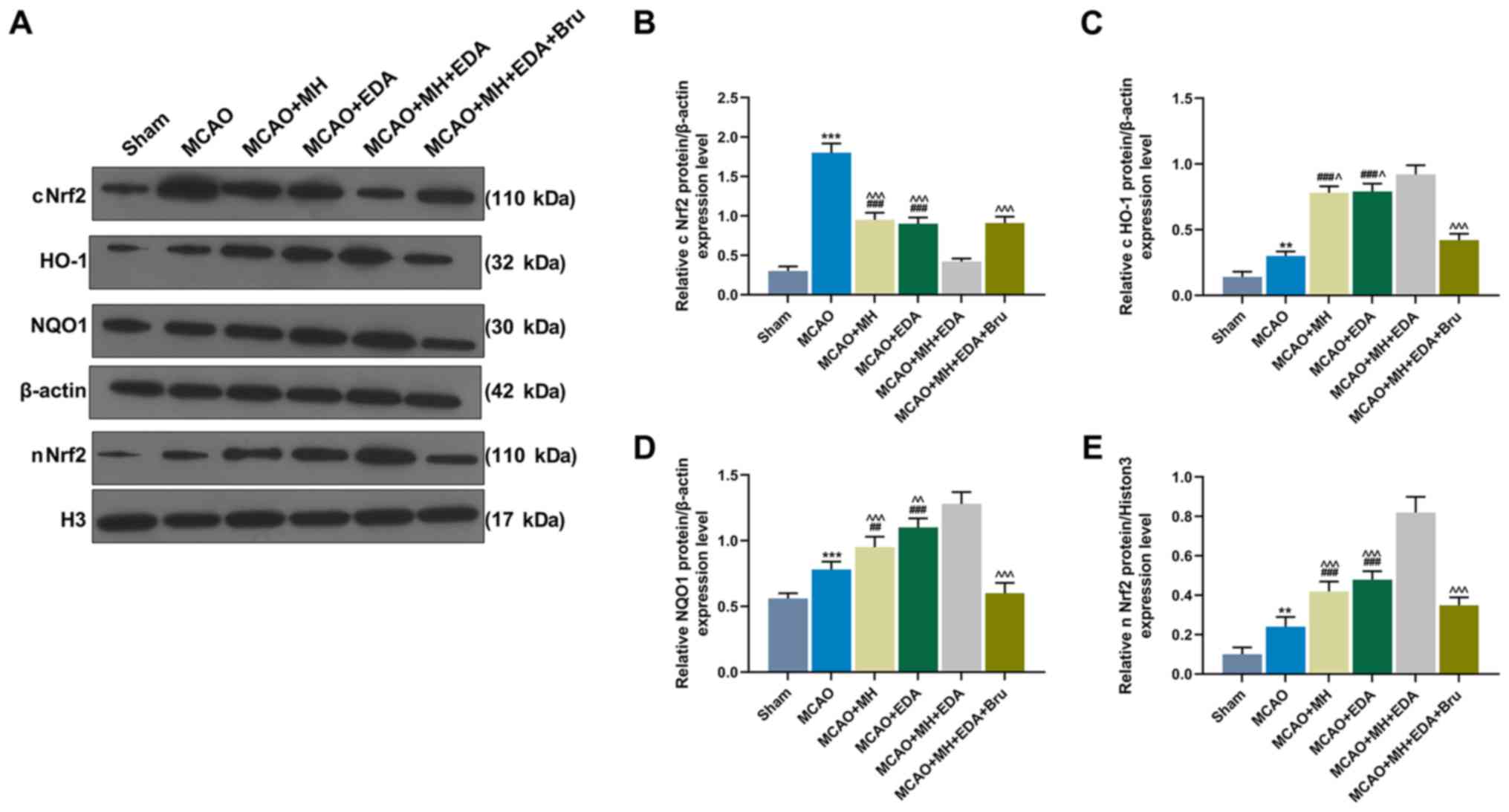|
1
|
Alkhachroum Am, Miller B, Chami T,
Tatsuoka C and Sila C: A troponin study on patients with ischemic
stroke, intracerebral hemorrhage and subarachnoid hemorrhage: Type
II myocardial infarction is significantly associated with stroke
severity, discharge disposition and mortality. J Clin Neurosci.
64:83–88. 2019. View Article : Google Scholar : PubMed/NCBI
|
|
2
|
Feigin VL, Mensah GA, Norrving B and
Murray CJ: Atlas of the Global Burden of Stroke (1990–2013): The
GBD 2013 Study. Neuroepidemiology. 45:230–236. 2015. View Article : Google Scholar :
|
|
3
|
Vos T, Abajobir AA, Abate KH, Abbafati C,
Abbas KM, Abd-Allah F, Abdulkader RS, Abdulle AM, Abebo TA, Abera
SF, et al: GBD 2016 Disease and Injury Incidence and Prevalence
Collaborators: Global, regional, and national incidence,
prevalence, and years lived with disability for 328 diseases and
injuries for 195 countries, 1990–2016: A systematic analysis for
the Global Burden of Disease Study 2016. Lancet. 390:1211–1259.
2017. View Article : Google Scholar
|
|
4
|
Cheung RT: The utility of melatonin in
reducing cerebral damage resulting from ischemia and reperfusion. J
Pineal Res. 34:153–160. 2003. View Article : Google Scholar : PubMed/NCBI
|
|
5
|
Zerna C, Thomalla G, Campbell BCV, Rha JH
and Hill MD: Current practice and future directions in the
diagnosis and acute treatment of ischaemic stroke. Lancet.
392:1247–1256. 2018. View Article : Google Scholar : PubMed/NCBI
|
|
6
|
Leng T, Shi Y, Xiong ZG and Sun D:
Proton-sensitive cation channels and ion exchangers in ischemic
brain injury: New therapeutic targets for stroke? Prog Neurobiol.
115:189–209. 2014. View Article : Google Scholar : PubMed/NCBI
|
|
7
|
Tang XN, Liu L, Koike MA and Yenari MA:
Mild hypothermia reduces tissue plasminogen activator-related
hemorrhage and blood brain barrier disruption after experimental
stroke. Ther Hypothermia Temp Manag. 3:74–83. 2013. View Article : Google Scholar : PubMed/NCBI
|
|
8
|
Tu Y, Guo C, Song F, Huo Y, Geng Y, Guo M,
Bao H, Wu X and Fan W: Mild hypothermia alleviates diabetes
aggravated cerebral ischemic injury via activating autophagy and
inhibiting pyroptosis. Brain Res Bull. 150:1–12. 2019. View Article : Google Scholar : PubMed/NCBI
|
|
9
|
Yang GS, Zhou XY, An XF, Liu XJ, Zhang YJ
and Yu D: Mild hypothermia inhibits the Notch 3 and Notch 4
activation and seizure after stroke in the rat model. Pathol Res
Pract. 214:1008–1016. 2018. View Article : Google Scholar : PubMed/NCBI
|
|
10
|
Liu LQ, Liu XR, Zhao JY, Yan F, Wang RL,
Wen SH, Wang L, Luo YM and Ji XM: Brain-selective mild hypothermia
promotes long-term white matter integrity after ischemic stroke in
mice. CNS Neurosci Ther. 24:1275–1285. 2018. View Article : Google Scholar : PubMed/NCBI
|
|
11
|
Yuan Y, Zha H, Rangarajan P, Ling EA and
Wu C: Anti-inflammatory effects of Edaravone and Scutellarin in
activated microglia in experimentally induced ischemia injury in
rats and in BV-2 microglia. BMC Neurosci. 15:1252014. View Article : Google Scholar : PubMed/NCBI
|
|
12
|
Li L, Yang R, Li P, Lu H, Hao J, Li L,
Tucker D and Zhang Q: Combination Treatment with Methylene Blue and
Hypothermia in Global Cerebral Ischemia. Mol Neurobiol.
55:2042–2055. 2018. View Article : Google Scholar
|
|
13
|
Shibuta S, Varathan S, Kamibayashi T and
Mashimo T: Small temperature variations alter edaravone-induced
neuroprotection of cortical cultures exposed to prolonged hypoxic
episodes. Br J Anaesth. 104:52–58. 2010. View Article : Google Scholar
|
|
14
|
Dodson M, de la Vega MR, Cholanians AB,
Schmidlin CJ, Chapman E and Zhang DD: Modulating NRF2 in Disease:
Timing Is Everything. Annu Rev Pharmacol Toxicol. 59:555–575. 2019.
View Article : Google Scholar :
|
|
15
|
Shou L, Bei Y, Song Y, Wang L, Ai L, Yan Q
and He W: Nrf2 mediates the protective effect of edaravone after
chlorpyrifos-induced nervous system toxicity. Environ Toxicol.
34:626–633. 2019. View Article : Google Scholar : PubMed/NCBI
|
|
16
|
Li C, Mo Z, Lei J, Li H, Fu R, Huang Y,
Luo S and Zhang L: Edaravone attenuates neuronal apoptosis in
hypoxic-ischemic brain damage rat model via suppression of TRAIL
signaling pathway. Int J Biochem Cell Biol. 99:169–177. 2018.
View Article : Google Scholar : PubMed/NCBI
|
|
17
|
Cen J, Zhao N, Huang WW, Liu L, Xie YY,
Gan Y, Wang CJ and Ji BS: Polyamine analogue QMA attenuated
ischemic injury in MCAO rats via ERK and Akt activated Nrf2/HO-1
signaling pathway. Eur J Pharmacol. 844:165–174. 2019. View Article : Google Scholar
|
|
18
|
Longa EZ, Weinstein PR, Carlson S and
Cummins R: Reversible middle cerebral artery occlusion without
craniectomy in rats. Stroke. 20:84–91. 1989. View Article : Google Scholar : PubMed/NCBI
|
|
19
|
Bi M, Wang J, Zhang Y, Li L, Wang L, Yao
R, Duan S, Tong S and Li J: Bone mesenchymal stem cells
transplantation combined with mild hypothermia improves the
prognosis of cerebral ischemia in rats. PLoS One. 13:pp.
e01974052018, View Article : Google Scholar : PubMed/NCBI
|
|
20
|
An H, Duan Y, Wu D, Yip J, Elmadhoun O,
Wright JC, Shi W, Liu K, He X, Shi J, et al: Phenothiazines Enhance
Mild Hypothermia-induced Neuroprotection via PI3K/Akt Regulation in
Experimental Stroke. Sci Rep. 7:74692017. View Article : Google Scholar : PubMed/NCBI
|
|
21
|
Yang GS, Zhou XY, An XF, Liu XJ, Zhang YJ
and Yu D: Synergistic effect of mild hypothermia and the Notch
inhibitor DAPT against post stroke seizures. Biomed Pharmacother.
96:675–684. 2017. View Article : Google Scholar : PubMed/NCBI
|
|
22
|
Liu S, Geng X, Forreider B, Xiao Y, Kong
Q, Ding Y and Ji X: Enhanced beneficial effects of mild hypothermia
by phenothiazine drugs in stroke therapy. Neurol Res. 37:pp.
454–460. 2015, View Article : Google Scholar : PubMed/NCBI
|
|
23
|
Dai HB, Xu MM, Lv J, Ji XJ, Zhu SH, Ma RM,
Miao XL and Duan ML: Mild hypothermia combined with hydrogen
sulfide treatment during resuscitation reduces hippocampal neuron
apoptosis via NR2A, NR2B, and PI3K-Akt signaling in a rat model of
cerebral ischemia-reperfusion injury. Mol Neurobiol. 53:4865–4873.
2016. View Article : Google Scholar
|
|
24
|
Jeffery KJ: The Hippocampus: From Memory,
to Map, to Memory Map. Trends Neurosci. 41:64–66. 2018. View Article : Google Scholar : PubMed/NCBI
|
|
25
|
Xu F, Zhang G, Yin J, Zhang Q, Ge MY, Peng
L, Wang S and Li Y: Fluoxetine mitigating late-stage cognition and
neurobehavior impairment induced by cerebral ischemia reperfusion
injury through inhibiting ERS-mediated neurons apoptosis in the
hippocampus. Behav Brain Res. 370:1119522019. View Article : Google Scholar : PubMed/NCBI
|
|
26
|
Das KK, Gupta AD, Dhundasi SA, Patil AM,
Das SN and Ambekar JG: Protective role of L-ascorbic acid on
antioxidant defense system in erythrocytes of albino rats exposed
to nickel sulfate. Biometals. 20:177–184. 2007. View Article : Google Scholar
|
|
27
|
Yang Y, Duan W, Jin Z, Yi W, Yan J, Zhang
S, Wang N, Liang Z, Li Y, Chen W, et al: JAK2/STAT3 activation by
melatonin attenuates the mitochondrial oxidative damage induced by
myocardial ischemia/reperfusion injury. J Pineal Res. 55:275–286.
2013. View Article : Google Scholar : PubMed/NCBI
|
|
28
|
Zhang P, Li W, Li L, Wang N, Li X, Gao M,
Zheng J, Lei S, Chen X, Lu H, et al: Treatment with edaravone
attenuates ischemic brain injury and inhibits neurogenesis in the
subventricular zone of adult rats after focal cerebral ischemia and
reperfusion injury. Neuroscience. 201:297–306. 2012. View Article : Google Scholar
|
|
29
|
Lei S, Zhang P, Li W, Gao M, He X, Zheng
J, Li X, Wang X, Wang N, Zhang J, et al: Pre- and posttreatment
with edaravone protects CA1 hippocampus and enhances neurogenesis
in the subgranular zone of dentate gyrus after transient global
cerebral ischemia in rats. ASN Neuro. 6:17590914145584172014.
View Article : Google Scholar : PubMed/NCBI
|
|
30
|
Racay P, Tatarková Z, Drgová A, Kaplan P
and Dobrota D: Ischemia-reperfusion induces inhibition of
mitochondrial protein synthesis and cytochrome c oxidase activity
in rat hippocampus. Physiol Res. 58:127–138. 2009.
|
|
31
|
Zhong S, Li Z, Huan L and Chen BY:
Neurochemical mechanism of electroacupuncture: Anti-injury effect
on cerebral function after focal cerebral ischemia in rats. Evid
Based Complement Alternat Med. 6:51–56. 2009. View Article : Google Scholar :
|
|
32
|
Zhang R, Xu M, Wang Y, Xie F, Zhang G and
Qin X: Nrf2-a promising therapeutic target for defensing against
oxidative stress in stroke. Mol Neurobiol. 54:6006–6017. 2017.
View Article : Google Scholar
|
|
33
|
Wu L, Li HH, Wu Q, Miao S and Liu ZJ:
Lipoxin A4 activates Nrf2 pathway and ameliorates cell damage in
cultured cortical astrocytes exposed to oxygen-glucose
deprivation/reperfusion insults. J Mol Neurosci. 56:848–857. 2015.
View Article : Google Scholar : PubMed/NCBI
|
|
34
|
Xu P, Liu Q, Xie Y, Shi X, Li Y, Peng M,
Guo H, Sun R, Li J, Hong Y, et al: Breast cancer susceptibility
protein 1 (BRCA1) rescues neurons from cerebral
ischemia/reperfusion injury through NRF2-mediated antioxidant
pathway. Redox Biol. 18:158–172. 2018. View Article : Google Scholar : PubMed/NCBI
|
|
35
|
Li Z, Yulei J, Yaqing J, Jinmin Z, Xinyong
L, Jing G and Min L: Protective effects of tetramethylpyrazine
analogue Z-11 on cerebral ischemia reperfusion injury. Eur J
Pharmacol. 844:156–164. 2019. View Article : Google Scholar
|
|
36
|
Xia D and Zhang H: Effects of mild
hypothermia on expression of NF-E2-related factor 2 and
heme-oxygenase-1 in cerebral cortex and hippocampus after
cardiopulmonary resuscitation in rats. Iran J Basic Med Sci.
20:1002–1008. 2017.PubMed/NCBI
|
|
37
|
Kim SW, Lee HK, Shin JH and Lee JK:
Up-down regulation of HO-1 and iNOS gene expressions by ethyl
pyruvate via recruiting p300 to Nrf2 and depriving It from p65.
Free Radic Biol Med. 65:468–476. 2013. View Article : Google Scholar : PubMed/NCBI
|


















